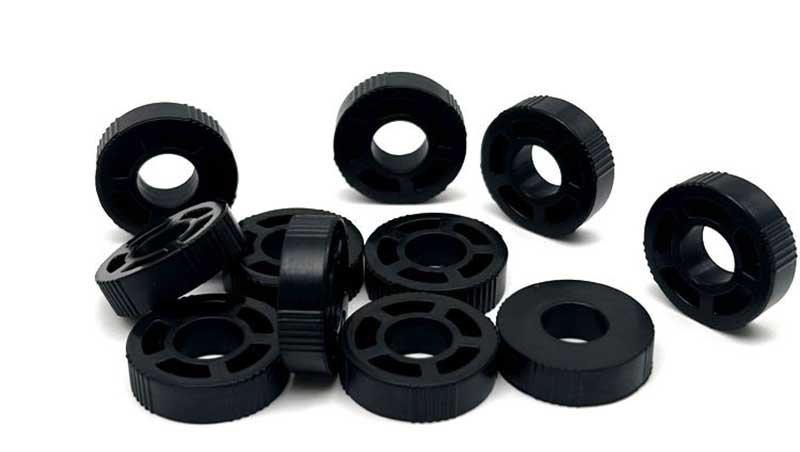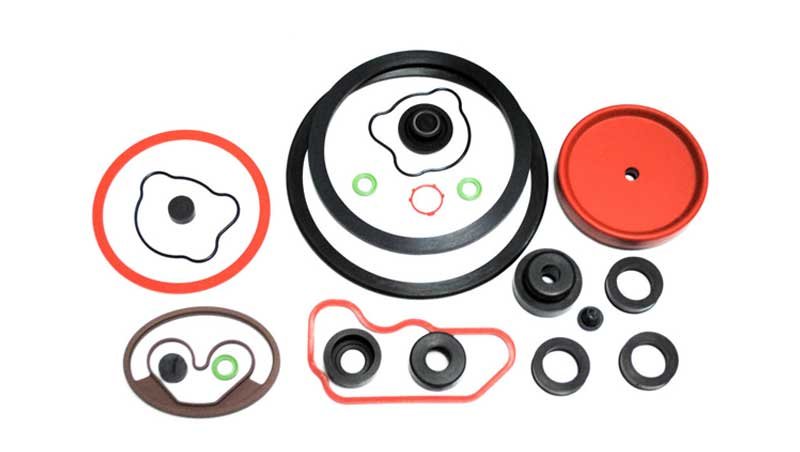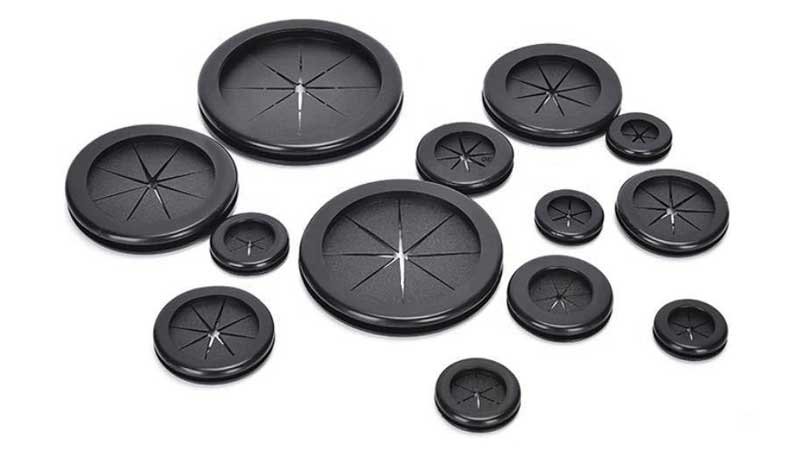Are you looking for a new way to produce silicone? Silicone centrifugal casting is a fascinating technique. This method uses centrifugal force to craft high-quality silicone parts with complex shapes and fine surface details. In this article, we’ll explore how silicone centrifugal casting works, its advantages over traditional methods like injection and compression molding, the popular products it creates, and the growing market demand for these items.
What is Silicone Centrifugal Casting
Silicone centrifugal casting is a precision molding technique that uses centrifugal force to drive liquid silicone into the cavities of a mold. It is mainly used to create silicone products with complex, thin-walled structures and high-precision surface details. The core principle is to overcome the surface tension and viscosity resistance of the silicone fluid through the centrifugal force generated by high-speed rotation, ensuring bubble-free and high-density material distribution.
Silicone Centrifugal Casting Process Flow
1. Mold Preparation
Precision molds with cavities are designed to align with the direction of the centrifugal force. Surface treatments, such as nano-coating, are applied to reduce mold release resistance.
2. Silicone Mixing
Liquid silicone rubber (LSR) is mixed with a curing agent in precise proportions, followed by vacuum degassing to remove air bubbles. Functional fillers can be added to modify the silicone’s properties.
3. Centrifugal Injection
The silicone mixture is injected into a rotating mold. The rotation speed is typically controlled between 500 and 3000 RPM, depending on the product size.
Centrifugal force pushes silicone evenly to the outer walls of the mold, ensuring uniform material distribution.
4. Curing and Forming
The mold is heated to temperatures ranging from 80 to 180°C to trigger the vulcanization (curing) reaction.
The centrifugal force continuously compensates for shrinkage during curing, ensuring that the final product maintains its shape and size with high precision.
This method offers significant advantages in producing complex, high-quality silicone parts with fine details and minimal defects, making it suitable for industries such as automotive, medical, and consumer electronics.

Superior Alternative to Traditional Manufacturing Processes
Silicone centrifugal casting is a high-precision manufacturing technique. It can replace some traditional molding methods, providing better results in specific scenarios. Below are a few processes that silicone centrifugal casting can replace, along with the benefits it brings:
| Process | Replacement Potential | Benefits |
| Injection Molding | Requires high mold costs and long development for complex parts. | Complex Shapes Lower Costs High Precision |
| Compression Molding | Best for simple parts, but lacks precision and complexity. | Complex Shapes Less Manual Labor Even Material Distribution |
Replacement Potential:
Injection molding is commonly used for mass-producing precision parts. However, it often requires high mold investments and long development cycles. For parts that need highly complex shapes, thin walls, or multi-material combinations, silicone centrifugal casting can be an alternative to injection molding.
Benefits:
- Adaptability to Complex Shapes: Silicone centrifugal casting excels at creating intricate geometric shapes, especially for parts with detailed internal cavities and evenly distributed outer walls.
- Lower Costs: For small batch production or prototype development, silicone centrifugal casting is more cost-effective than injection molding, thanks to its lower mold costs.
- High Precision: The centrifugal force ensures even distribution of silicone in the mold, making it ideal for parts requiring tight tolerances.
Replacement Potential:
Compression molding is typically used to produce medium to large quantities of simple silicone parts. Silicone centrifugal casting can replace compression molding in some cases, especially when more complex shapes or higher precision are needed.
Benefits:
- Higher Shape Complexity: Silicone centrifugal casting can handle more complex shapes and finer details, whereas compression molding is best suited for simpler designs.
- Reduced Manual Labor: As a more automated process, centrifugal casting reduces manual errors and complexities, leading to higher consistency in production.
- Even Material Distribution: The centrifugal force helps to evenly distribute the material within the mold, preventing issues like air bubbles or uneven material distribution.
In summary, silicone centrifugal casting offers clear advantages over traditional methods such as injection and compression molding. It provides flexibility, precision, and cost-effectiveness, making it an excellent choice for complex and high-precision parts across various industries.

Popular Products in Silicone Centrifugal Casting
In the silicone centrifugal casting industry, products with high market share and growth potential are mainly concentrated in the following sectors:
- Seals for High-Tech Industries: This includes seals for electric vehicles and medical devices. These applications require high precision and reliability, making them ideal for silicone centrifugal casting.
- Industrial Silicone Products: Products such as wear-resistant and corrosion-resistant seals are widely used in various industrial applications. These parts need to perform under tough conditions, and silicone centrifugal casting provides the necessary durability.
Competitive Advantages:
- Advanced Technology: Silicone centrifugal casting can produce highly precise parts with complex shapes that are difficult to achieve with other methods.
- Product Quality: The centrifugal casting process ensures consistency and low defect rates, delivering high-quality products every time.
- Customization: The process is flexible and can be tailored to meet specific customer requirements, offering a high level of customization for different industries.
These advantages help silicone centrifugal casting products maintain a dominant position in the market, driving rapid growth and demand across multiple industries.

Stability and Growth Potential of Market Demand
The stability of market demand for silicone centrifugal casting is influenced by various factors, particularly across different application sectors. These factors include industry trends, technological advancements, and customer demands. Below is an analysis of the stability of market demand for silicone centrifugal casting:
| Sector | Demand Stability |
| Medical & Healthcare | Stable demand for medical devices, seals, tubing. Silicone’s biocompatibility and durability ensure steady demand. |
| Automotive | Stable demand for seals, gaskets, hoses, and sensor parts, especially for high-temperature, durable components. |
| Consumer Electronics | Stable demand for sealing and protective components in devices like smartphones and smart home products. |
| Soft Robotics & Automation | Steady demand due to the rise of flexible, durable silicone parts for soft robots and automation components. |
- Stability of Demand
Medical and Healthcare Industry
Demand Stability: The demand for silicone components in the medical sector remains relatively stable, especially for medical devices, artificial organs, seals, and medical tubing. Silicone’s biocompatibility, high-temperature resistance, and corrosion resistance make it widely used in this field. Medical device production usually has long-term demand, ensuring a steady market for silicone components.
Trends: With the global aging population and increasing health awareness, the demand for high-performance silicone parts in the healthcare sector is expected to continue to grow.
Automotive Industry
Demand Stability: The automotive industry also experiences stable demand for silicone parts, particularly in seals, gaskets, hoses, and sensor components. The need for high-temperature and aging-resistant parts is high in the automotive sector, and silicone is an ideal material for these applications.
Trends: The rise of electric vehicles presents new opportunities. Increased demand for silicone parts in battery packaging, charging interfaces, and other automotive applications may drive growth in the future. Overall, the demand in the automotive sector remains relatively stable.
- Consumer Electronics
Demand Stability: Silicone is commonly used for sealing and protective components in consumer electronics. As the demand for smartphones, smart home devices, and other consumer electronics increases, the demand for silicone components remains stable.
Trends: With the rise of 5G, smart wearables, and smart home devices, the demand for silicone parts may grow. However, this market tends to fluctuate with the lifecycle of consumer electronic products.
- Soft Robotics and Industrial Automation
Demand Stability: As soft robotics technology advances and industrial automation continues to grow, the demand for flexible, durable silicone parts increases steadily. Silicone centrifugal casting is particularly useful in these fields for manufacturing parts with complex shapes and high precision.
Trends: With the development of industry and smart manufacturing, the demand for flexible robots and automation devices will likely boost the demand for silicone parts.

- Market Growth Potential
- Global Market Trends
Globalization: As globalization progresses, the demand for silicone components is expected to grow, especially in emerging markets like India, Southeast Asia, and Africa. These regions are experiencing increased demand in industries such as medical, automotive, and consumer electronics, which will support the growth of silicone centrifugal casting.
Mature Market Stability: In mature markets like North America, Europe, and Japan, demand remains stable. Although product update cycles and technological advancements may affect demand, silicone centrifugal casting remains a key process for essential applications in these regions.
- Customization and Small-Batch Production Growth
As industries increasingly demand customization and small-batch production, the need for silicone centrifugal casting in personalized products, specialized equipment, and high-end manufacturing is likely to rise. Particularly in high-value sectors like medical devices and soft robotics, the potential for growth is significant.
Conclusion
Silicone centrifugal casting is a game-changing process that delivers precision and flexibility for making complex silicone parts. It’s perfect for industries like automotive, medical, and consumer electronics, offering top-quality results at a reasonable cost. With demand for these products steadily rising, it’s a great time to consider this technology for your needs.
Looking to bring your silicone product ideas to life? Our company specializes in silicone product and is ready to provide high-quality, customized solutions. Contact us today to meet your manufacturing goals!